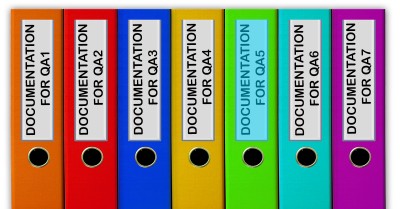Quality Area 5 - Relationships With Children provides a sense of connection to support children and development of their identity and social and emotional competence. Exploring and learning to socialise appropriately with others, and to manage feelings, behaviours and responsibilities is a complex process. When educators take a positive, strengths-based approach they ultimately empower children to develop the skills needed to interact and negotiate effectively with others.
The following lists the documentation services are required to have in order to support achievement of QA5 in each element.
5.1 – Respectful and equitable relationships are maintained with each child.
5.1.1 Responsive and meaningful interactions build trusting relationships which engage and support each child to feel secure, confident and included.
Documentation to support this includes:
- examples of information gathered from - families to support their child during the settling-in process, other professionals or support agencies that work with children, including children who require additional support and those from culturally and linguistically diverse backgrounds
- the service’s approach to equity and inclusion, documented in the statement of philosophy
- plans for the inclusion of children who require additional support
- evidence that educators and co-ordinators draw on the diverse knowledge, experiences and views of their colleagues when reviewing their teaching strategies and experiences planned for children, to ensure that all children have opportunities to achieve learning outcomes
- evidence of planned and spontaneous experiences and routines where educators support the engagement of individual children and groups of children in experiences of their own choosing
- documentation of children’s learning that shows evidence that educators’ interactions with children are used to support children’s developing ideas, skills and relationships
5.1.2 The dignity and rights of every child are maintained.
Documentation to support this include:
- documentation that shows that diverse views, including family backgrounds and values, are considered in planning and programming for each child
- the United Nations Convention on the Rights of the Child displayed
- documented reflections on children’s experiences at the service including whether all children’s rights are being upheld
5.2 – Each child is supported to build and maintain sensitive and responsive relationships.
5.2.1 – Children are supported to collaborate, learn from and help each other.
Documentation to support this includes:
- the service’s policy on interactions with children and behaviour guidance
- evidence that the program and routines include regular opportunities for children to engage in social play and collaborative experiences, educators identify children’s shared interests and use this information to plan
- further collaborative learning opportunities
- the program includes collaborative and challenging learning experiences that are responsive to children’s interests
5.2.2 – Each child is supported to regulate their own behaviour, respond appropriately to the behaviours of others and communicate effectively to resolve conflicts.
Documentation to support this includes:
- the service’s policies and procedures on interactions with children and behaviour guidance
- planned and spontaneous experiences that support children to develop and practise the skills required to participate in group discussions and
- negotiate shared decision-making with their peers
- collaboration with schools, other professionals or support agencies that
- work with children who have diagnosed behavioural or social difficulties
- examples of information gathered from families about their children’s social skills and relationship preferences
- documented communication with families that shows their views, ideas and preferences have been considered when planning appropriate strategies to support their child’s positive inclusion in the program
- the service’s policy on interactions with children that outlines a clear process for guiding children’s behaviour, based on current recognised approaches and with a focus on children’s rights
- individual behaviour guidance plans for children, including evidence of consultation with their families and if appropriate, input and suggestions from other professionals and support agencies.
Click to download: Supporting Doc QA5 Checklist - a checklist of documentation (listed above) that is required in order to achieve Quality Area 5.
For a list of outcomes under each element: How To Achieve Quality Area 5



 Here is the list of the EYLF Learning Outcomes that you can use as a guide or reference for your documentation and planning. The EYLF
Here is the list of the EYLF Learning Outcomes that you can use as a guide or reference for your documentation and planning. The EYLF The EYLF is a guide which consists of Principles, Practices and 5 main Learning Outcomes along with each of their sub outcomes, based on identity,
The EYLF is a guide which consists of Principles, Practices and 5 main Learning Outcomes along with each of their sub outcomes, based on identity, This is a guide on How to Write a Learning Story. It provides information on What Is A Learning Story, Writing A Learning Story, Sample
This is a guide on How to Write a Learning Story. It provides information on What Is A Learning Story, Writing A Learning Story, Sample One of the most important types of documentation methods that educators needs to be familiar with are “observations”. Observations are crucial for all early childhood
One of the most important types of documentation methods that educators needs to be familiar with are “observations”. Observations are crucial for all early childhood To support children achieve learning outcomes from the EYLF Framework, the following list gives educators examples of how to promote children's learning in each individual
To support children achieve learning outcomes from the EYLF Framework, the following list gives educators examples of how to promote children's learning in each individual Reflective practice is learning from everyday situations and issues and concerns that arise which form part of our daily routine while working in an early
Reflective practice is learning from everyday situations and issues and concerns that arise which form part of our daily routine while working in an early Within Australia, Programming and Planning is reflected and supported by the Early Years Learning Framework. Educators within early childhood settings, use the EYLF to guide
Within Australia, Programming and Planning is reflected and supported by the Early Years Learning Framework. Educators within early childhood settings, use the EYLF to guide When observing children, it's important that we use a range of different observation methods from running records, learning stories to photographs and work samples. Using
When observing children, it's important that we use a range of different observation methods from running records, learning stories to photographs and work samples. Using This is a guide for educators on what to observe under each sub learning outcome from the EYLF Framework, when a child is engaged in
This is a guide for educators on what to observe under each sub learning outcome from the EYLF Framework, when a child is engaged in The Early Years Learning Framework describes the curriculum as “all the interactions, experiences, activities, routines and events, planned and unplanned, that occur in an environment
The Early Years Learning Framework describes the curriculum as “all the interactions, experiences, activities, routines and events, planned and unplanned, that occur in an environment


